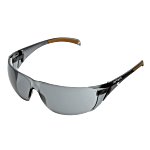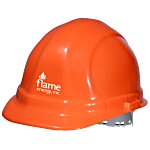ANSI & NFPA Safety Standards
The International Safety Equipment Association (ISEA) has been the recognized leader in setting and developing voluntary safety standards for over 80 years. Their work is overseen by The American National Standards Institute (ANSI). For more information about which standard is more appropriate for your work environment, ANSI/ISEA standards can be easily found online.
The National Fire Protection Association (NFPA), a non-profit organization existing for over 125 years, is helping develop voluntary standards for fire, electrical, and building safety. NFPA standards are established through a consensus standards development process approved by the American National standards institute (ANSI).
Eyewear Protection
The ANSI/ISEA Z87.1 standard sets out performance requirements for eyewear used as personal protective equipment. The standard details a variety of tests and assessments that can be applied to a design, dependent on the planned usage and potential hazards. Marks indicating which hazards a pair of safety glasses protects against will always be found on the glasses.
Shop all Better Choices® products meeting these Eyewear Protection standardsHeadwear Protection
The ANSI/ISEA Z89.1 standard sets out performance requirements for headwear used as personal protective equipment enabling you to keep associates safe from on-the-job risks. The standard details different levels of protection termed as 'Types' and 'Classes' depending on the risk present in the work environment.
- Class I protects for top of head protection, Class 2 for top and sides as well as chin protection
- Type E protects up to 20,000 volts, Class G protects to 2200 volts, Type C has no voltage protection and is suitable where no electrical risks are present
High-Visibility Apparel
The ANSI/ISEA 107 standard sets out performance requirements for materials used in high-visibility apparel such as t-shirts and jackets. The standards detail different levels of visibility, termed as 'Types' and 'Classes' that are required depending on the work environment.
- Type O. This is the lowest class and suitable people working in off-road environments where extra visibility in day or night is a benefit such as volunteers at an event or landscape gardeners.
- Type R. This is the minimum level of protection for workers that are in a roadway environment, the extra requirements make sure that they are more easily seen and protected.
- Type P. This is a higher level of protection for employees working in higher risk and more complex environments such as emergency responders.
- Background. Garments made from fluorescent-colored materials making the wearer highly conspicuous in dawn, day, or dusk. Item would however need additional reflective tape and/or the addition of a safety vest to meet the requirements of the above classes.
Trade Show NFPA
The National Fire Protection Association (NFPA) creates national code aimed at preventing injury and damage caused by fire and electrical incidents. In some states and cities, fabrics used in public spaces (including convention centers, trade show halls, educational establishments, auditoriums, and theatres) are legally required to be classified as flame resistant, according to standards developed by the NFPA.
NFPA 701 establishes the testing standard for flame propagation in textiles and film, including items such as table covers and throws, signage and tents. This test measures the flammability of a fabric when it is exposed to specific sources of ignition and assesses how well the flames may spread. Textiles and films which pass the established test criteria are considered to meet the NFPA 701 standard for flammability.
Shop all Better Choices® products meeting these Trade Show NFPA standards


